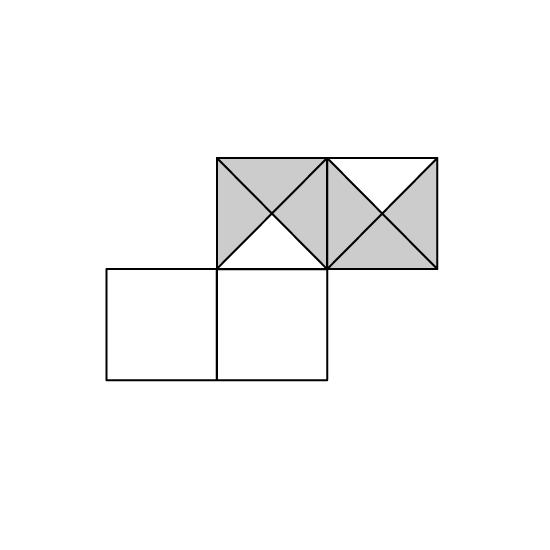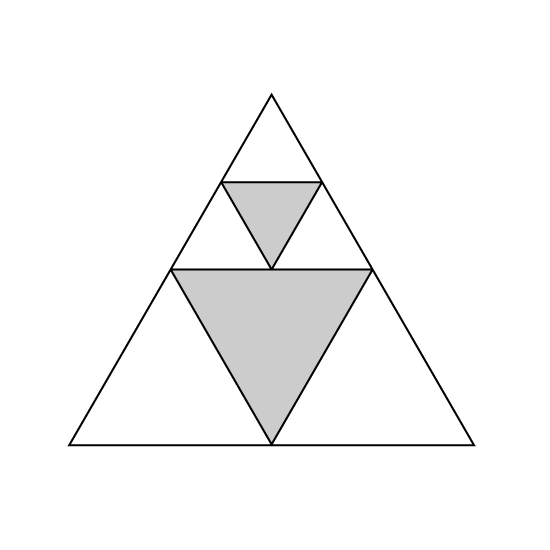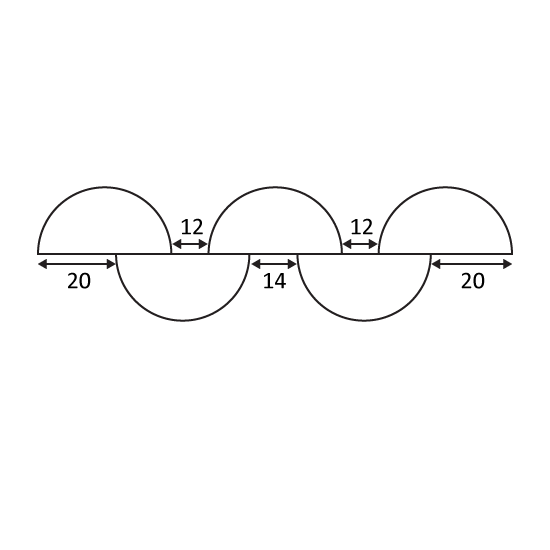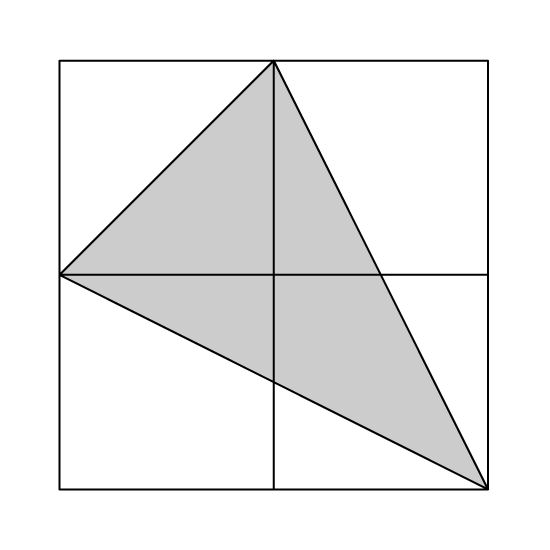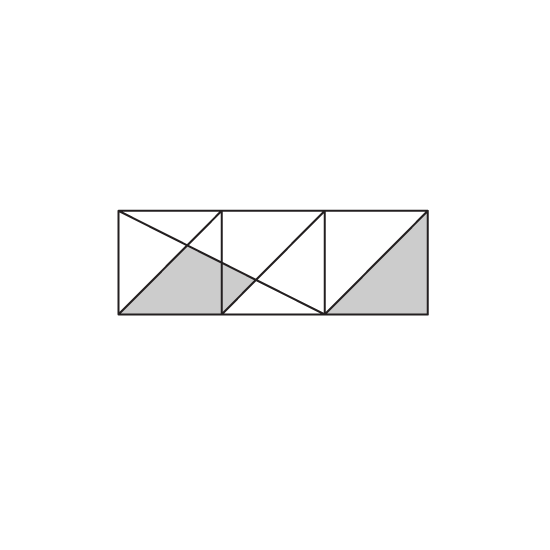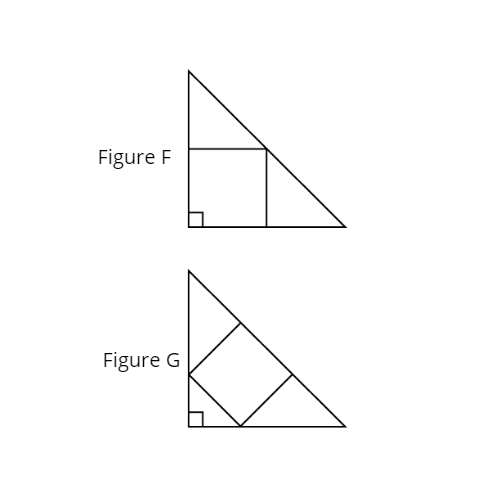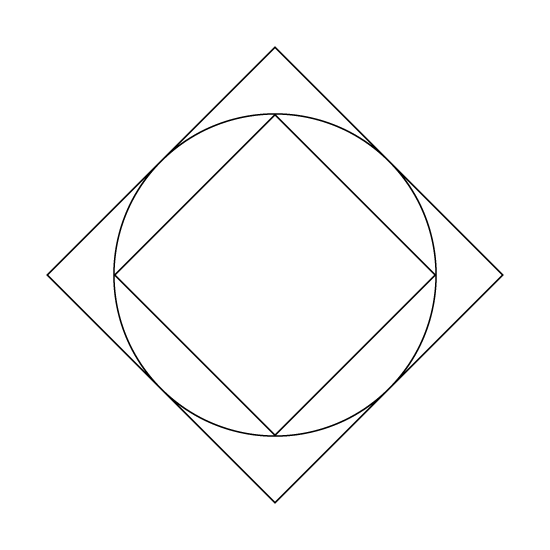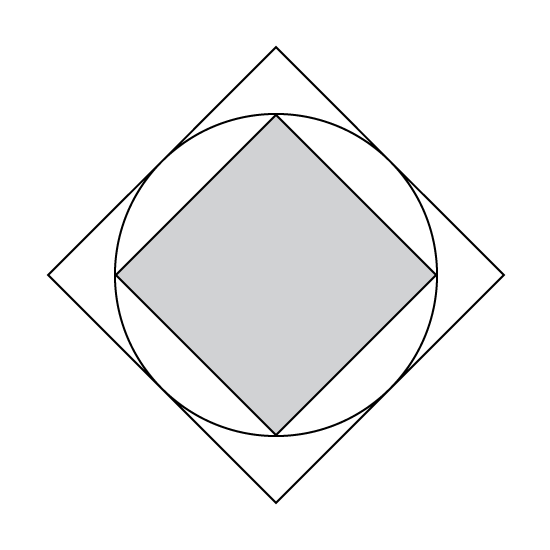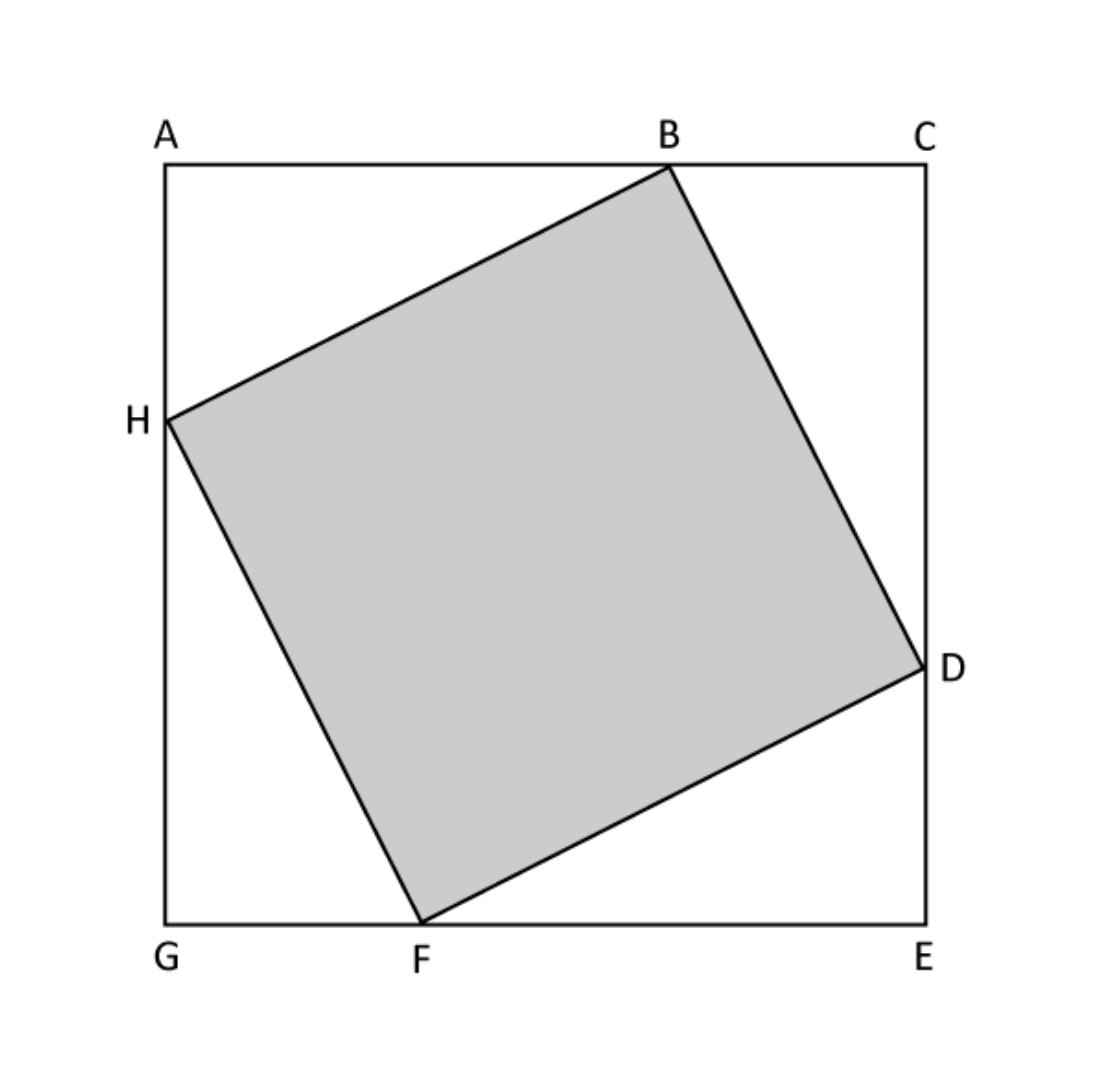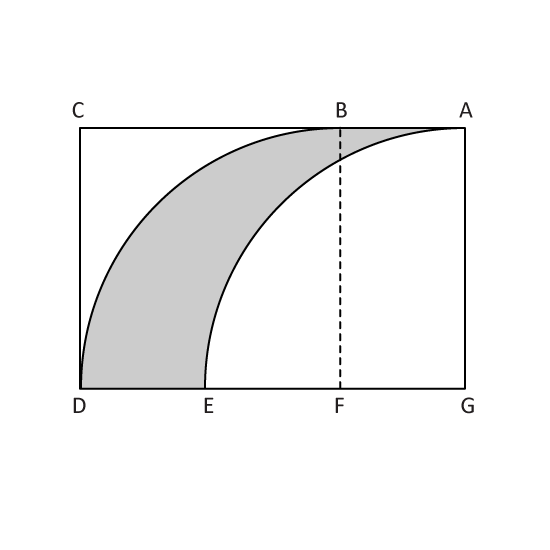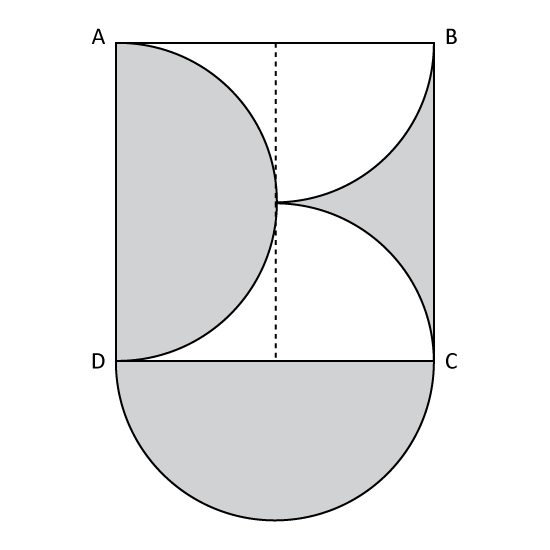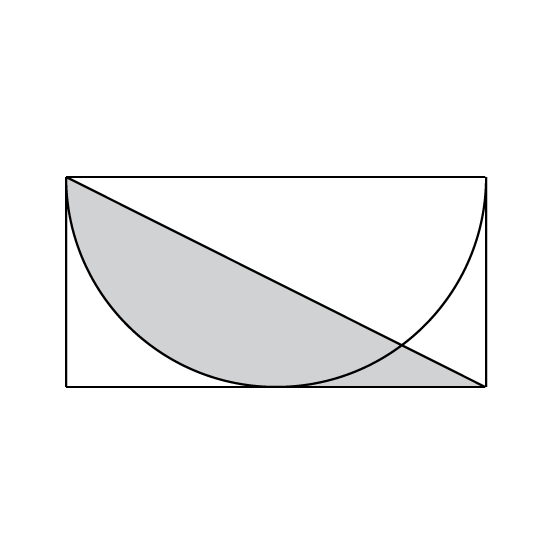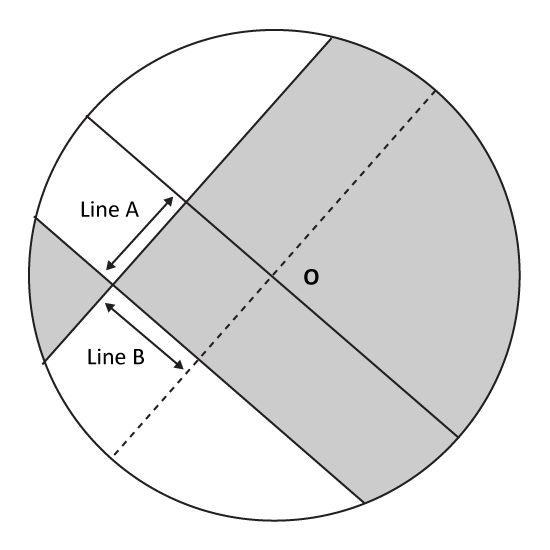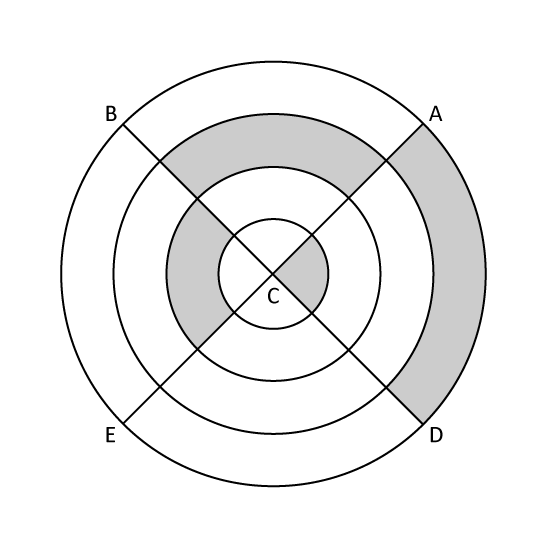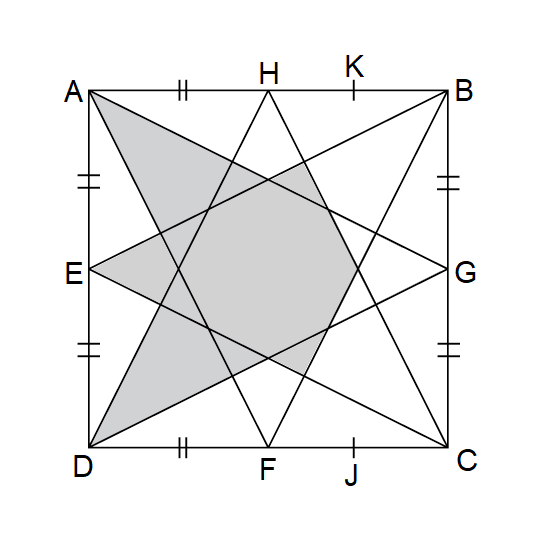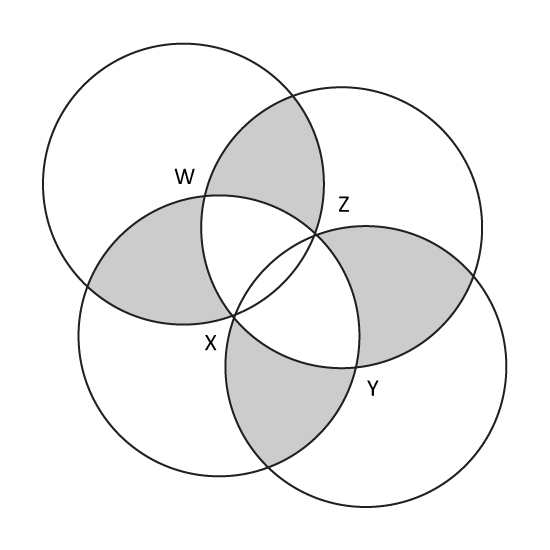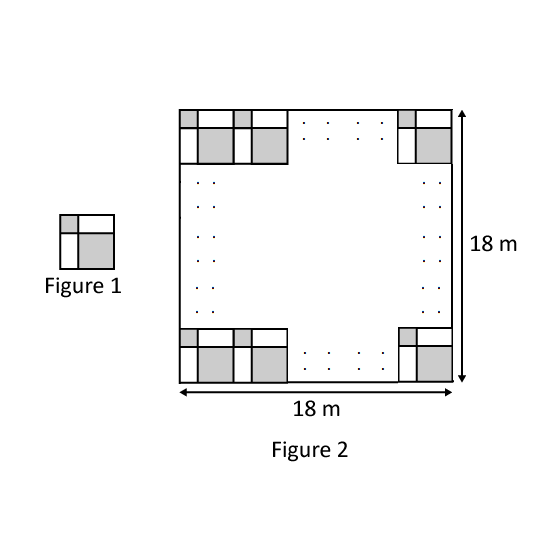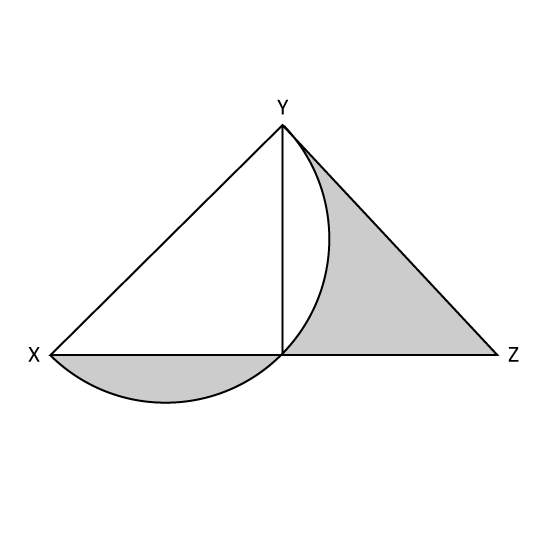Level 1 PSLE
The figure is made up of 4 squares. Two of the squares are divided equally into 4 triangles each. What fraction of the figure is shaded?
Level 1 PSLE
The figure is made up of 4 squares. Two of the squares are divided equally into 4 triangles each. What fraction of the figure is shaded?
Image in this question is not available.
Level 1 PSLE
The figure is made up of equilateral triangles. What fraction of the figure is shaded?
Level 1 PSLE
The figure is made up of equilateral triangles. What fraction of the figure is shaded?
Image in this question is not available.
Level 2 PSLE
The square ABCD is made up of 4 smaller squares.
- What is the ratio of the area of the shaded part to the area of the unshaded part?
- If the length of the square ABCD is 4 cm, what is the area of the shaded part?
Level 2 PSLE
The square ABCD is made up of 4 smaller squares.
- What is the ratio of the area of the shaded part to the area of the unshaded part?
- If the length of the square ABCD is 4 cm, what is the area of the shaded part?
Image in this question is not available.
Level 2 PSLE
Five identical semi-circles are arranged as shown. Find the diameter of one circle.
Level 2 PSLE
Five identical semi-circles are arranged as shown. Find the diameter of one circle.
Image in this question is not available.
Level 1
What fraction of the figure is shaded?
Level 1
What fraction of the figure is shaded?
Image in this question is not available.
Level 1 PSLE
The figure is made up of three squares ABGH, BCFG, CDEF. What fraction of the figure ADEH is shaded?
Level 1 PSLE
The figure is made up of three squares ABGH, BCFG, CDEF. What fraction of the figure ADEH is shaded?
Image in this question is not available.
Level 2
The figures F and G, are two identical isosceles triangles. Both figures contain a square of a different size. Given that the area of the square in Figure F is 252 cm2, find the area of the square in Figure G.
Level 2
The figures F and G, are two identical isosceles triangles. Both figures contain a square of a different size. Given that the area of the square in Figure F is 252 cm2, find the area of the square in Figure G.
Image in this question is not available.
Level 2
In the figure, the circle is touching each of the two squares at exactly four points, if the area of the bigger square is 100 cm2, find the area of the smaller square.
Level 2
In the figure, the circle is touching each of the two squares at exactly four points, if the area of the bigger square is 100 cm2, find the area of the smaller square.
Image in this question is not available.
Level 2
The figure consists of 2 squares and a circle. If the length of the bigger square is 10 cm, what is the area of the shaded part?
Level 2
The figure consists of 2 squares and a circle. If the length of the bigger square is 10 cm, what is the area of the shaded part?
Image in this question is not available.
Level 3 PSLE
In the figure not drawn to scale, ACEG and BDFH are squares. AB, CD, EF and GH are of the same length. The ratio of AB : BC is 3 : 1.
- What fraction of square ACEG is shaded?
- If the length of the square is 96 cm, find the unshaded area in cm2.
Level 3 PSLE
In the figure not drawn to scale, ACEG and BDFH are squares. AB, CD, EF and GH are of the same length. The ratio of AB : BC is 3 : 1.
- What fraction of square ACEG is shaded?
- If the length of the square is 96 cm, find the unshaded area in cm2.
Image in this question is not available.
Level 2
The figure, not drawn to scale, consists of a rectangle ABFG, a square BCDF, and 2 identical quadrants AGE and BFD. AG = 8 cm and FG = 4 cm. Find the shaded area. (Take π = 227)
Level 2
The figure, not drawn to scale, consists of a rectangle ABFG, a square BCDF, and 2 identical quadrants AGE and BFD. AG = 8 cm and FG = 4 cm. Find the shaded area. (Take π = 227)
Image in this question is not available.
Level 2
The figure is formed by 2 semicircles, 2 identical quarter circles and a square ABCD. The perimeter of square ABCD is 60 cm. What is the total area of the shaded parts? Express the answer in the nearest whole number. (Take π = 3.14)
Level 2
The figure is formed by 2 semicircles, 2 identical quarter circles and a square ABCD. The perimeter of square ABCD is 60 cm. What is the total area of the shaded parts? Express the answer in the nearest whole number. (Take π = 3.14)
Image in this question is not available.
Level 1
The figure is made up of a rectangle and a semi-circle. The diameter of the circle is 80 cm. Find the area of the shaded part. (Take π = 3.14)
Level 1
The figure is made up of a rectangle and a semi-circle. The diameter of the circle is 80 cm. Find the area of the shaded part. (Take π = 3.14)
Image in this question is not available.
Level 2
The figure shows a circle with parts of its region shaded. O is the centre of the circle. Line A is 14.3 cm and Line B is 15.8 cm. Find the difference between the shaded and unshaded areas.
Level 2
The figure shows a circle with parts of its region shaded. O is the centre of the circle. Line A is 14.3 cm and Line B is 15.8 cm. Find the difference between the shaded and unshaded areas.
Image in this question is not available.
Level 2
The biggest circle has a diameter of 28 cm. Find the total area of the shaded parts. (Take π as 3.14)
Level 2
The biggest circle has a diameter of 28 cm. Find the total area of the shaded parts. (Take π as 3.14)
Image in this question is not available.
Level 2
The figure is formed using four identical isosceles triangles. AGD, AFB, BEC and CHD. ABCD is a square where E, F, G and H are midpoints of its sides. Given FJ = CJ, HK = BK and AD = 14 cm, find the total area of the shaded parts.
Level 2
The figure is formed using four identical isosceles triangles. AGD, AFB, BEC and CHD. ABCD is a square where E, F, G and H are midpoints of its sides. Given FJ = CJ, HK = BK and AD = 14 cm, find the total area of the shaded parts.
Image in this question is not available.
Level 2
The figure is formed by a circle and an isosceles triangle where PQ = PR. The radius of the circle is 14 cm. Find the area of the shaded part. (Take π = 227)
Level 2
The figure is formed by a circle and an isosceles triangle where PQ = PR. The radius of the circle is 14 cm. Find the area of the shaded part. (Take π = 227)
Image in this question is not available.
Level 2
The figure is made up of 4 identical circles where W, X, Y and Z are the centres of the circles. Each circle has a radius of 7 cm. Find the area of the shaded region. (Take π = 227)
Level 2
The figure is made up of 4 identical circles where W, X, Y and Z are the centres of the circles. Each circle has a radius of 7 cm. Find the area of the shaded region. (Take π = 227)
Image in this question is not available.
Level 3 PSLE Figure 1 shows a square tile made up of 2 grey squares, A and B and 2 identical white rectangles C. The length of 1 side of square A is twice the length of 1 side of square B.
- What fraction of the square tile in Figure 1 is grey?
- Figure 2 shows a wall laid with square tiles. The wall is 9 m by 9 m and is completed covered with square tiles. Find the total area of the wall covered by grey squares.
Level 3 PSLE Figure 1 shows a square tile made up of 2 grey squares, A and B and 2 identical white rectangles C. The length of 1 side of square A is twice the length of 1 side of square B.
- What fraction of the square tile in Figure 1 is grey?
- Figure 2 shows a wall laid with square tiles. The wall is 9 m by 9 m and is completed covered with square tiles. Find the total area of the wall covered by grey squares.
Image in this question is not available.
Level 3
The figure is made up of a right-angled isosceles triangle XYZ and a semicircle. XY = YZ and the diameter of the semicircle is 28 cm. Find the area of the shaded part of the figure.
Level 3
The figure is made up of a right-angled isosceles triangle XYZ and a semicircle. XY = YZ and the diameter of the semicircle is 28 cm. Find the area of the shaded part of the figure.
Image in this question is not available.
